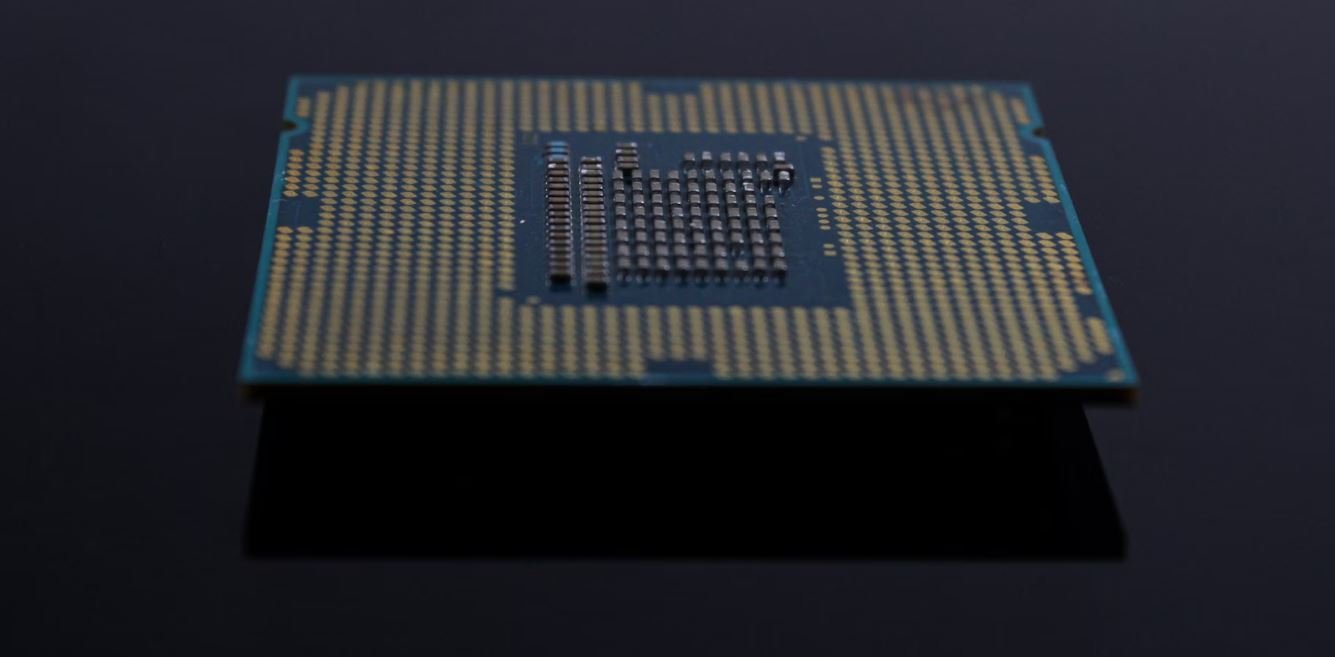Music Symbols – An Essential Guide
Music symbols are visual notations used to represent various aspects of music, allowing musicians to express and communicate musical ideas effectively. Understanding these symbols is essential for anyone interested in music theory or learning to play an instrument. In this article, we will explore the most commonly used music symbols and their meanings.
Key Takeaways:
- Music symbols are visual notations used in music theory and performance.
- Understanding music symbols is essential for musicians to read and interpret sheet music.
- Symbols represent pitch, rhythm, dynamics, articulation, and other musical elements.
Pitch Symbols
Pitch symbols indicate the desired pitch or note. The most common pitch symbol is the musical staff, which consists of five horizontal lines and four spaces. Notes are represented by oval-shaped symbols placed on the staff. Each line and space represents a different pitch. Using the staff, musicians can precisely communicate the desired melody.
Treble clef and bass clef are two important symbols used to indicate the range of pitches. The treble clef is typically used for higher pitched instruments, while the bass clef represents lower pitched instruments.
Rhythm Symbols
Rhythm symbols are used to indicate the duration and timing of notes and rests. The time signature at the beginning of a music piece determines the number of beats in each measure and the type of note that receives one beat. Common time signatures include 4/4, which is often used in popular music, and 3/4, commonly found in waltzes.
Notes are represented by different-shaped symbols with noteheads and stems. Whole notes, half notes, quarter notes, eighth notes, and sixteenth notes convey different durations. By using rhythm symbols, musicians can accurately portray the rhythm and tempo of a piece.
Dynamics and Articulation Symbols
Dynamics symbols indicate the relative volume or intensity of a musical passage. The most common dynamic symbols include forte (loud) and piano (soft). Other notations indicate gradual changes in volume.
Articulation symbols provide instructions on how to play each note, such as staccato (short and detached) or legato (smooth and connected). These symbols affect the style and character of the music being played. Using dynamics and articulation symbols, musicians can add expressiveness and emotion to their performances.
Music Symbols Tables
| Symbol | Description |
|---|---|
| ♩ | Quarter Note |
| ♪ | Fortissimo |
| p | Piano |
| Symbol | Description |
|---|---|
| 𝄞 | G Clef |
| 𝄢 | F Clef |
| 𝅝 | Flat |
| Symbol | Description |
|---|---|
| 𝅗 | Crescendo |
| 𝅙 | Staccato |
| 𝄞 | Moderato |
Conclusion
In conclusion, music symbols play a crucial role in the understanding, interpretation, and performance of music. They enable musicians to communicate musical ideas, including pitch, rhythm, dynamics, and articulation. By familiarizing oneself with these symbols, musicians can effectively read sheet music and convey the intended musical expression. Start exploring the fascinating world of music symbols today!

Common Misconceptions
Music Symbols
There are several common misconceptions that people have around music symbols. This article aims to debunk some of these misconceptions and provide accurate information.
Misconception 1: Music symbols are universal
- Some symbols have different meanings in different musical traditions.
- Western music symbols may not be familiar or understood in other cultures.
- The interpretation of symbols can vary based on the context and musical genre.
Misconception 2: Music symbols only represent pitch
- Music symbols also indicate rhythm, dynamics, articulation, and other musical elements.
- Symbols such as fermatas, crescendos, and staccatos convey expressive instructions.
- Understanding the full range of music symbols is crucial to accurately perform and interpret a musical piece.
Misconception 3: Music symbols are static and unchanging
- The use and meaning of music symbols have evolved throughout history.
- New symbols and notations continue to be invented and added to musical notation systems.
- The interpretation and significance of symbols may vary across different musical styles and periods.
Misconception 4: Music symbols are complex and difficult to learn
- While some symbols may seem complex at first, with proper guidance and practice, they can be easily understood and interpreted.
- Basic music symbols such as notes, rests, and accidentals can be quickly grasped by beginners.
- Mastering complex music symbols requires time and dedication, but it is an achievable goal with consistent effort.
Misconception 5: Music symbols are only for professionals
- Music symbols are not exclusive to professional musicians.
- Learning music symbols can enhance anyone’s understanding and enjoyment of music.
- Knowing how to read and interpret music symbols can also contribute to improving one’s musical skills and creativity.

Music Symbols
Music symbols are essential in sheet music notation as they allow musicians to accurately interpret and perform musical compositions. Understanding these symbols is crucial for musicians of all levels, whether they are learning to read sheet music or composing their own music. This article explores 10 different music symbols and their meanings.
Clef Symbols
Clef symbols indicate the pitch range of the notes written on the stave. There are three main types of clef symbols:
| Clef Symbol | Meaning |
|---|---|
| Treble Clef | Indicates notes played by high-pitched instruments or sung by high voices. |
| Bass Clef | Indicates notes played by low-pitched instruments or sung by low voices. |
| Alto Clef | Indicates notes played by viola, alto trombone, or other mid-range instruments. |
Time Signature Symbols
Time signature symbols provide information about the rhythm and grouping of beats in a musical composition. The following table presents some commonly used time signature symbols:
| Time Signature Symbol | Meaning |
|---|---|
| 4/4 | Also known as common time, represents four beats per measure with a quarter note receiving one beat. |
| 3/4 | Three beats per measure with a quarter note receiving one beat. |
| 6/8 | Compound time signature with six beats per measure, each eighth note receiving one beat. |
Dynamics Symbols
Dynamics symbols indicate the relative loudness or softness of the music. They help convey the desired expression and intensity of a musical piece. Here are a few common dynamics symbols:
| Dynamics Symbol | Meaning |
|---|---|
| pp | Pianissimo – very soft |
| p | Piano – soft |
| ff | Fortissimo – very loud |
Accidental Symbols
Accidental symbols are used to modify the pitch of a note and are placed before the note on the staff. They include sharps, flats, and naturals. Here are some examples:
| Accidental Symbol | Meaning |
|---|---|
| # | Sharp – raises the pitch by a semitone |
| b | Flat – lowers the pitch by a semitone |
| natural | Cancel the effect of a previous accidental and return the note to its natural pitch |
Rest Symbols
Rest symbols indicate periods of silence in music. They are used to denote the duration of silence depending on the type of rest. Here are a few examples:
| Rest Symbol | Duration |
|---|---|
| Whole Rest | Four beats of silence |
| Half Rest | Two beats of silence |
| Quarter Rest | One beat of silence |
Repetition Symbols
Repetition symbols indicate that a specific section of music should be repeated.
| Repetition Symbol | Meaning |
|---|---|
| Repeat Sign | Indicates that the previous section should be repeated from the beginning or indicated repeat sign. |
| Segno | Indicates that the performer should jump to the segno symbol and play from there. |
| Coda | An instruction to skip to a specific coda section. |
Articulation Symbols
Articulation symbols guide performers on how to execute each individual note, including details related to attack, duration, and release. Here are a few examples:
| Articulation Symbol | Meaning |
|---|---|
| Staccato | Indicates each note should be played short and detached. |
| Legato | Indicates that each note should be played smoothly and connected. |
| Tenuto | Indicates that each note should be played for its full duration. |
Leger Lines
Leger lines are short lines that extend the staff to represent notes above or below the range indicated by the clef symbol. They help prevent overcrowding of notation. Here is an example:
| Leger Line | Meaning |
|---|---|
| Visible line above or below the staff | Extends the staff to accommodate notes outside the pitch range indicated by the clef symbol. |
Symbols for Pedal Markings
Pedal markings in piano music indicate when and how to use the sustain or una corda pedals. Here are some commonly used symbols:
| Pedal Marking Symbol | Meaning |
|---|---|
| + | Indicates the sustain pedal should be pressed. |
| una corda | Instructs the performer to use the soft pedal. |
| release | Indicates the pedal should be released. |
Understanding music symbols greatly enhances a musician’s ability to read and interpret sheet music accurately. By comprehending the various symbols used in musical notation, performers can convey the intended musical expression and bring the composer’s vision to life.
Frequently Asked Questions
What is the significance of music symbols?
Music symbols are used to represent various musical concepts and elements, aiding in the interpretation and performance of music. They provide a visual representation of musical ideas such as notes, rhythms, dynamics, and articulations.
How do I read music symbols?
Reading music symbols requires some basic knowledge of music notation. Each symbol has a specific meaning and tells the performer how to play or interpret a particular part of the music. Learning to read music symbols involves studying the different types of notes, rests, clefs, key signatures, time signatures, and musical expressions.
What are some commonly used music symbols?
Some commonly used music symbols include treble clef, bass clef, sharp, flat, natural, quarter note, eighth note, half note, whole note, crescendo, decrescendo, staccato, legato, and fermata. These symbols are integral to expressing musical ideas and conveying specific instructions to the performer.
Can music symbols vary across different music genres?
While the basic music symbols remain the same across different music genres, there can be variations and additional symbols specific to certain styles of music. For example, jazz or contemporary music may use symbols for specific techniques or improvisational elements that are not commonly found in classical music.
Where can I find a comprehensive guide to music symbols?
A comprehensive guide to music symbols can be found in music theory textbooks, online music theory websites, or through music teachers and instructors. These resources provide detailed explanations and examples of various music symbols along with guidelines on their usage and interpretation.
What is the purpose of enharmonic symbols in music?
Enharmonic symbols are used to indicate equivalent pitches that are written differently. For example, B flat and A sharp are enharmonic pitches. These symbols help maintain proper notation and clarity in music, ensuring accurate performance and understanding of the intended pitches.
How do dynamics symbols affect the performance of music?
Dynamics symbols, such as piano (soft) and fortissimo (very loud), indicate the volume or intensity of the music. They guide performers in properly interpreting the musical expression and help create contrasts in dynamics throughout a piece. Dynamics symbols can greatly enhance the emotional impact of music.
Are music symbols universal?
Yes, music symbols are considered universal in the sense that they are widely used and recognized across different cultures and musical traditions. However, their interpretation and execution may vary slightly depending on the specific musical style or context.
Can I create my own music symbols?
While it is possible to create your own music symbols for personal use or specific musical projects, it is advisable to follow established conventions and guidelines to ensure clear communication and understanding. Creating new symbols without proper context or precedence may cause confusion among performers or readers.
Do music symbols have any historical significance?
Music symbols have a rich historical significance as they have evolved over centuries to convey musical ideas across different cultures and time periods. Exploring the historical development of music symbols can provide insights into the evolution of music notation and the cultural context of musical practices.




